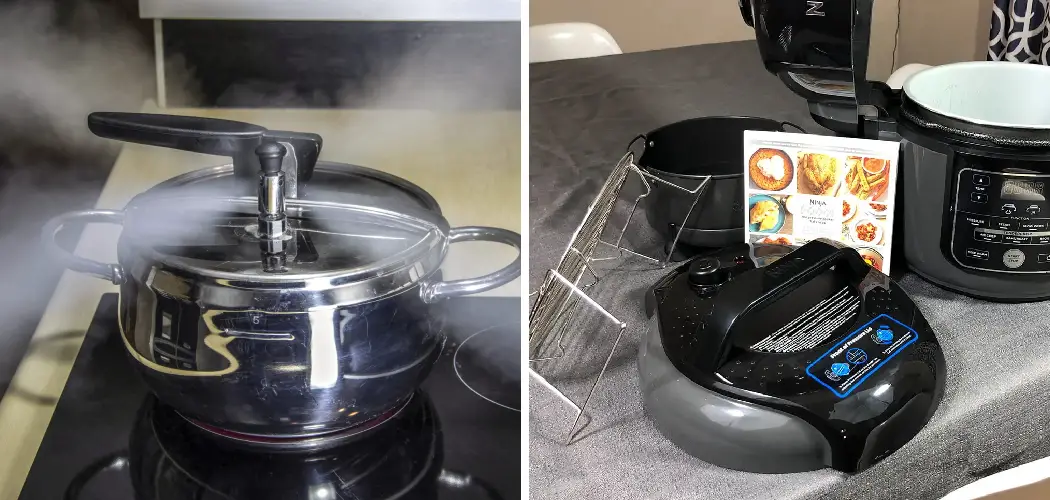Pressure cookers are hailed as time-saving culinary marvels, transforming tough cuts of meat into succulent dishes and reducing cooking times significantly. However, lurking behind their efficiency lies a potential danger: the possibility of explosion.
The mechanics are simple yet critical. As heat builds up inside the sealed pot, so does pressure. If this pressure isn’t released properly through the valve, a catastrophic explosion can occur.
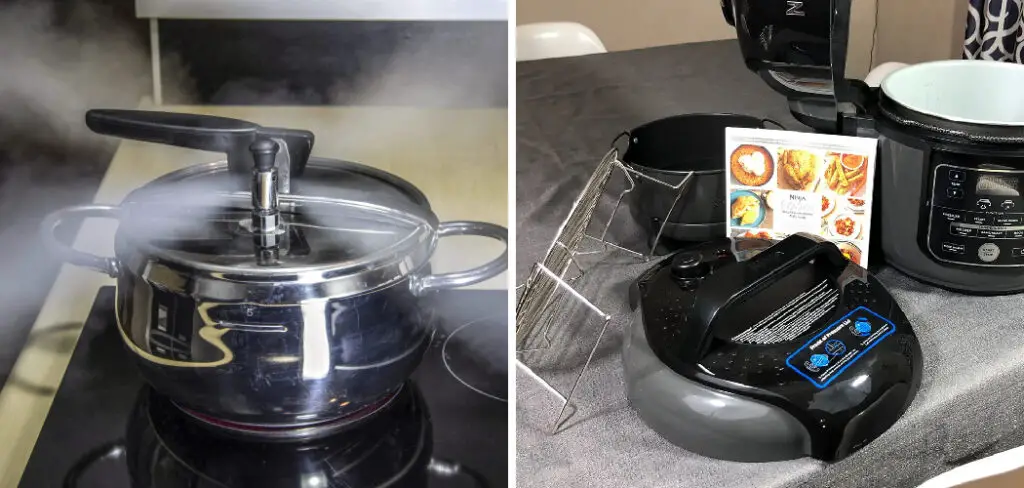
Factors such as overfilling, improper maintenance, or defects in the cooker can exacerbate the risk. When the pressure exceeds the cooker’s capacity to contain it, the consequences can be devastating, sending scalding-hot liquids and metal shrapnel flying.
Understanding how does a pressure cooker explode underscores the importance of using pressure cookers safely. By adhering to proper usage guidelines, regularly inspecting equipment, and employing caution, cooks can mitigate the risk and enjoy the benefits of pressure cooking without fear of explosion.
Importance of Understanding the Causes and Prevention
Understanding the causes of pressure cooker explosions and the measures for prevention is crucial for anyone using this kitchen device. This knowledge not only ensures the safety of the cook but also protects others in the surrounding area from potential harm.
By becoming familiar with the factors that can lead to an explosion, such as overfilling or neglecting maintenance, users can take appropriate steps to mitigate these risks.
Additionally, by adhering to manufacturers’ guidelines, conducting regular inspections for wear or damage, and using the cooker as intended, the likelihood of an accident can be significantly reduced.
Therefore, educating oneself about the proper operation and care of pressure cookers is indispensable. It not only extends the lifespan of the device but also makes the cooking process more enjoyable and worry-free.
Mechanics of Pressure Cookers
The operation of a pressure cooker is a marvel of simple physics applied to cooking. At its core, a pressure cooker is a sealed pot that creates a high-pressure environment by trapping steam inside.
When water or any liquid inside the pot heats up, it turns into steam, which raises the pressure within the tightly sealed cooker. Under normal atmospheric pressure, water boils at 100°C (212°F).
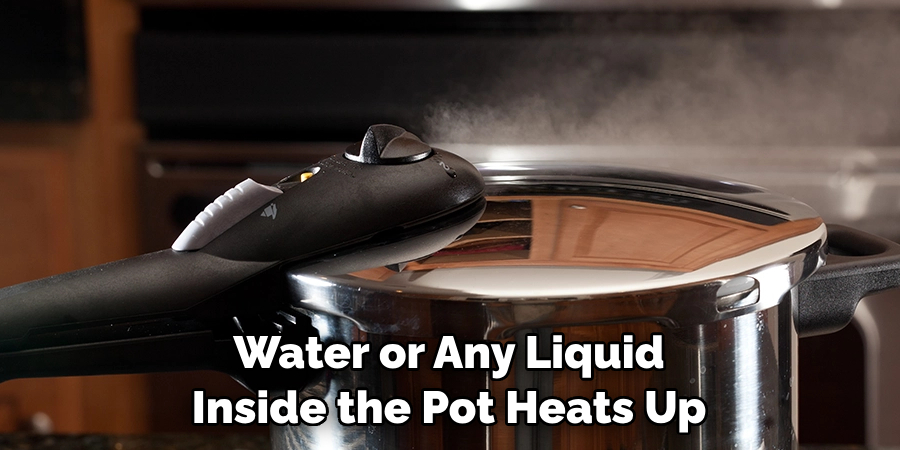
However, inside a pressure cooker, the boiling point of water increases as the pressure rises, allowing the temperature to reach upwards of 120°C (248°F). This elevated cooking temperature significantly speeds up the cooking process.
The design of pressure cookers includes several key components to manage this high-pressure environment safely.
A locking lid ensures a tight seal, while a pressure regulator on the lid maintains the cooker’s internal pressure within safe limits. Most modern pressure cookers also come equipped with safety valves and vents that release excess pressure automatically to avoid the risk of explosion.
By harnessing the physics of pressurized steam, pressure cookers cook food faster than traditional methods, while also preserving nutrients and flavors that are often lost through prolonged cooking. Understanding the mechanics behind this efficient cooking tool sheds light on its capabilities and the precautions necessary to use it safely.
Components of a Pressure Cooker
The efficiency and safety of a pressure cooker depend on its various components, each designed to perform specific functions. Key components include:
- Lid: The lid of a pressure cooker is designed to create an airtight seal, preventing steam from escaping during cooking. It typically locks into place, ensuring it cannot be opened while pressure is inside the pot.
- Gasket or Sealing Ring: This is a rubber or silicone ring fitted around the edge of the lid, which helps to seal the lid tightly against the pot body, ensuring no steam escapes.
- Pressure Regulator Valve: This valve controls the amount of pressure allowed to build within the cooker. It maintains pressure at a safe level and is critical for preventing over-pressurization.
- Vent Pipe/Safety Valve: Should the pressure exceed safe levels, this valve will release steam to lower the pressure inside the cooker, acting as a safety feature to prevent explosion.
- Steam Basket: Often used for steaming food above the liquid, allowing for healthier cooking options. It prevents food from coming into direct contact with the hot liquid at the bottom of the pot.
- Locking Pin/Safety Lock: This mechanism indicates when there is pressure inside the cooker and prevents the lid from being opened, ensuring safety.
- Pressure Indicator: A feature that shows the pressure level inside the cooker, allowing users to monitor and adjust the cooking process as needed.
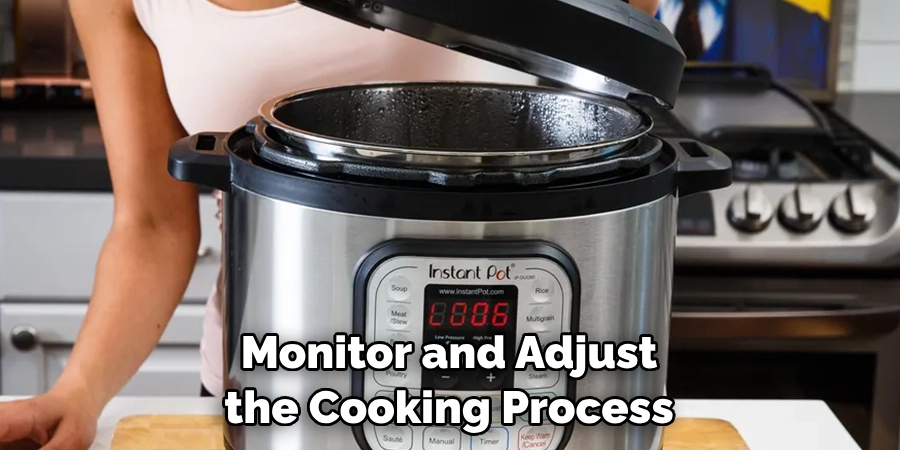
These components work together to ensure the pressure cooker operates effectively and safely, making it a powerful tool in the kitchen. Proper understanding of each part and its function can significantly enhance both the cooking results and safety measures.
Importance of Maintaining Proper Pressure Levels
Maintaining proper pressure levels inside a pressure cooker is crucial for both safety and culinary success. When the pressure within the cooker is regulated correctly, it ensures that food is cooked evenly and efficiently, preserving its nutrients and enhancing its flavors.
Conversely, if the pressure is too high, it poses a significant safety risk, including the potential for an explosion, which can cause injury and damage. Furthermore, excessively high pressure can lead to overcooked or mushy food, while too low pressure may result in undercooked dishes.
Monitoring and adjusting the pressure to suit the type of food being prepared is key to leveraging the full potential of pressure cooking. It entails a balance that, when achieved, transforms ingredients into sumptuous meals safely and effectively.
Therefore, understanding how to maintain proper pressure levels is an essential part of using a pressure cooker, underscoring the importance of familiarizing oneself with the cooker’s operation manual and recognizing the signals of the pressure indicator or regulator valve.
Causes of Pressure Cooker Explosions
Pressure cooker explosions, while rare, can occur due to several reasons, each related to the misuse or malfunction of the cooker’s components. One common cause is overfilling the pot, which leaves insufficient space for steam to accumulate and results in excessive pressure build-up.
Foods that foam and froth, such as rice, beans, and lentils, can block the steam vents and pressure release valves, effectively trapping pressure inside the cooker with no means of escape.
Another critical factor is the failure to properly maintain and inspect the cooker’s safety features, such as the gasket or sealing ring, vent pipe, and pressure regulator valve.
Over time, these components can wear out, become damaged, or clogged with food particles, compromising their ability to regulate pressure effectively. This degradation can lead to a scenario where excess pressure is not relieved, risking an explosion.
Use of Damaged or Faulty Cookers
The use of damaged or faulty pressure cookers poses significant risks and is a leading cause of kitchen accidents involving this appliance. Any damage or malfunction can impair the cooker’s ability to properly contain and control the high pressure required for its operation.
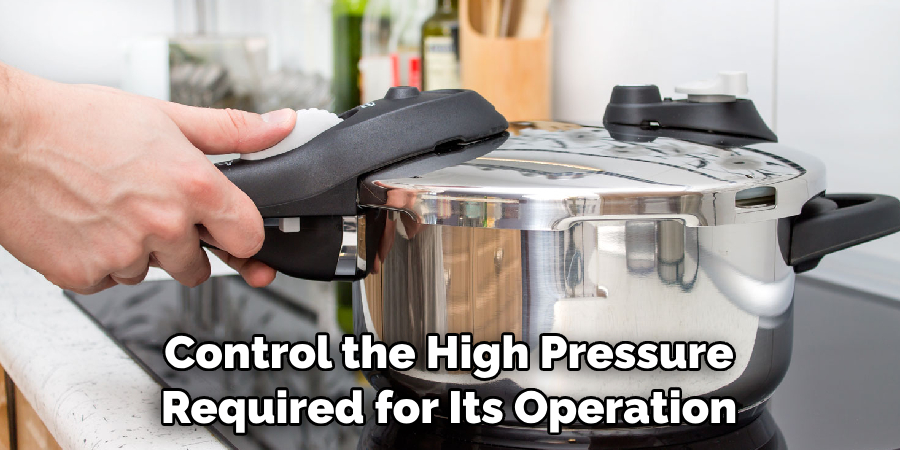
Common issues include warped or cracked pots, deteriorated gaskets, and faulty safety valves. Such defects may not only lead to inefficient cooking and spoiled meals but also increase the risk of steam burns, explosions, and kitchen fires.
It is crucial for users to conduct regular inspections of their pressure cooker’s condition, paying special attention to any signs of wear or damage to its critical components.
Manufacturers often recommend periodic replacement of parts like gaskets or sealing rings, even when they show no visible signs of deterioration, to ensure the cooker remains safe to use. Operating a pressure cooker that is known to be damaged or malfunctioning is unsafe and should be strictly avoided.
If defects are discovered, the appliance should be repaired or replaced before further use. This vigilance ensures both the safety of the user and the longevity of the appliance, maintaining its role as an efficient and reliable tool in the kitchen.
Improper Maintenance and Cleaning
Improper maintenance and cleaning of a pressure cooker can lead to a variety of problems, affecting both the performance of the appliance and the safety of its operation.
Neglecting to clean the cooker thoroughly after each use can cause food particles and residue to accumulate, especially in critical areas like the gasket sealing ring, vent pipe, and pressure valves. This buildup can obstruct steam vents, affect the integrity of the seal, and interfere with the cooker’s ability to regulate pressure accurately.
Similarly, failure to periodically check and replace worn or damaged parts can compromise the cooker’s safety mechanisms. For instance, a sealing ring that has become hardened or cracked over time may not seal properly, leading to steam leaks and reduced pressure inside the cooker.
Without regular inspection and maintenance, these issues might remain unnoticed until they contribute to a malfunction or, worse, a dangerous pressure release incident.
10 Methods How Does a Pressure Cooker Explode
1. Overpressurization:
The primary cause of pressure cooker explosions is overpressurization. As heat is applied to the sealed pot, the temperature rises, causing the liquid inside to boil and produce steam. This steam increases the pressure within the cooker. If the pressure exceeds the cooker’s designed limits, it can rupture the vessel, leading to an explosion.
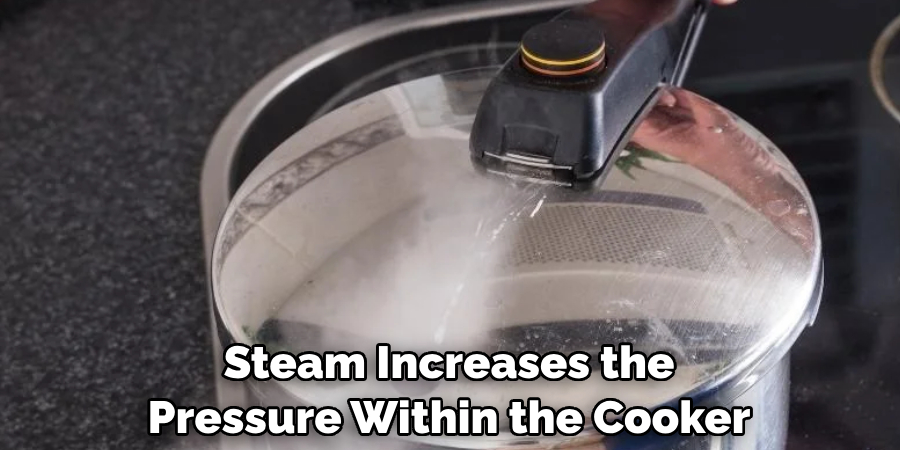
2. Blockage of Pressure Release Valve:
Pressure cookers are equipped with safety features, such as pressure release valves, to regulate internal pressure. However, if the release valve becomes blocked by food particles, debris, or improper positioning, the pressure buildup cannot escape. Consequently, the pressure cooker becomes a ticking time bomb, eventually resulting in an explosion.
3. Seal Malfunction:
The integrity of the pressure cooker’s seal is crucial for maintaining proper pressure levels. If the seal is damaged, worn out, or improperly installed, steam can leak out, causing a loss of pressure control. This loss of control can lead to rapid pressure buildup and, ultimately, an explosion.
4. Defective Safety Features:
Pressure cookers are designed with safety mechanisms to prevent explosions. However, defects or malfunctions in these features, such as faulty pressure release valves or defective locking mechanisms, can compromise the cooker’s ability to regulate pressure effectively. In such cases, the risk of explosion significantly increases.
5. Improper Filling:
Overfilling a pressure cooker can obstruct the free movement of steam, impeding the pressure release process. Additionally, filling the cooker with ingredients that produce excessive foam or froth, such as beans or grains, can exacerbate the problem. The resulting pressure buildup may exceed the cooker’s capacity, leading to an explosion.
6. Cooking High-Starch Foods:
Certain high-starch foods, such as rice and pasta, have a tendency to foam and froth during cooking. If not adequately accounted for, this foaming can obstruct the pressure release valve, preventing steam from escaping. As pressure continues to rise unchecked, the likelihood of a catastrophic explosion grows.
7. Rapid Temperature Fluctuations:
Abrupt changes in temperature, such as transferring a hot pressure cooker to a cold surface or exposing it to cold water, can cause thermal shock. This sudden contraction or expansion of the metal can weaken its structural integrity, making it more susceptible to rupture. If the pressure cooker is already under high pressure, the risk of explosion is heightened.
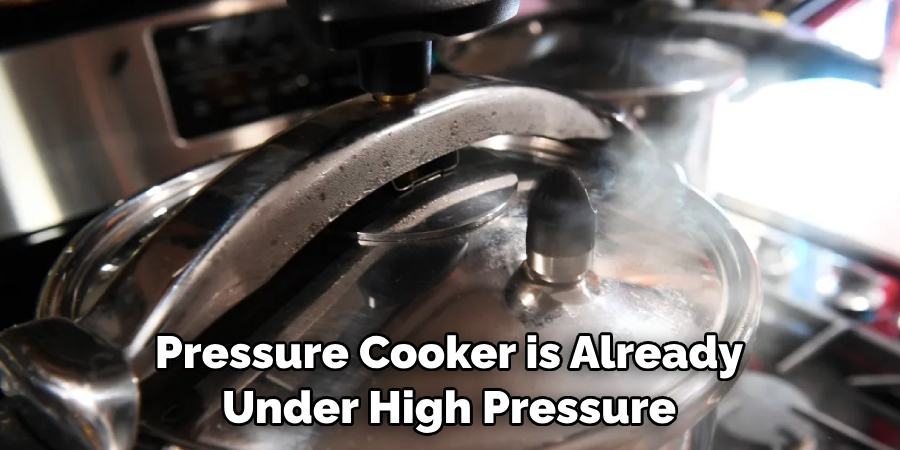
8. Using Damaged Cookware:
A pressure cooker with structural damage, such as dents, scratches, or cracks, is inherently compromised. These imperfections can weaken the cooker’s walls and increase the likelihood of a rupture under pressure. Using damaged cookware significantly elevates the risk of an explosion during cooking.
9. Neglecting Maintenance:
Regular maintenance is essential for ensuring the safe operation of a pressure cooker. Failure to clean the cooker properly, inspect the sealing ring for wear and tear, or replace worn-out parts can compromise its performance. Neglected pressure cookers are more prone to malfunction, increasing the risk of explosion.
10. User Error:
Perhaps the most common cause of pressure cooker explosions is user error. Ignorance of proper operating procedures, such as failing to seal the cooker correctly, not adding enough liquid, or attempting to open the cooker prematurely, can have catastrophic consequences. Inadequate understanding of the cooker’s mechanisms and safety features can lead to dangerous mistakes that result in explosions.
Potential Injuries from Pressure Cooker Explosions
Pressure cooker explosions can result in a wide range of injuries, some of which may be severe or life-threatening. The most common injuries include burns, which can vary from mild to third-degree, depending on the exposure to steam or hot liquids.
These burns often require immediate medical attention and can lead to long-term scarring or disfigurement.
Another potential injury is lacerations or cuts caused by shattered parts of the pressure cooker. The force of an explosion can turn components of the cooker into projectile objects, posing a significant risk of injury to anyone in the vicinity.
Eye injuries are also a concern, as the explosion can propel food particles, liquids, and cooker parts at high speeds, potentially leading to loss of vision if the eyes are struck.

What to Do in Case of a Pressure Cooker Explosion
In the unfortunate event of a pressure cooker explosion, it is crucial to prioritize safety and respond quickly to prevent further injury. Here are immediate steps to follow:
- Turn Off the Heat Source: Immediately turn off the stove or any other heat source to prevent further pressure buildup or fire hazards.
- Evacuate the Area: Ensure everyone in the vicinity moves to a safe location away from the kitchen. This minimizes the risk of injuries from possible subsequent explosions or exposure to steam and hot substances.
- Assess Injuries: Quickly evaluate if anyone has been injured by the explosion. In case of burns, cuts, eye injuries, or any other harm, seek medical attention immediately. For minor burns, running cool (not cold) water over the affected area can provide initial relief, but professional medical treatment is essential for serious injuries.
- Do Not Attempt to Reassemble: Avoid the urge to clean up or investigate the pressure cooker immediately after an explosion. The device could still be hot, structurally compromised, or under residual pressure, posing significant risks.
- Ventilate the Area: Open windows and doors to disperse any steam or fumes that could cause respiratory irritation or discomfort.
- Contact Professionals: Once the situation is stabilized, and all individuals are safe, consider contacting the manufacturer if the explosion resulted from a product defect. Additionally, it might be helpful to consult with a professional kitchen appliance repair service to assess the damage and advise on the safety of continuing to use the pressure cooker.
Remember, the priority is always the safety and well-being of all individuals involved. Taking swift and appropriate actions following a pressure cooker explosion can significantly mitigate the risks of further injuries or damage.
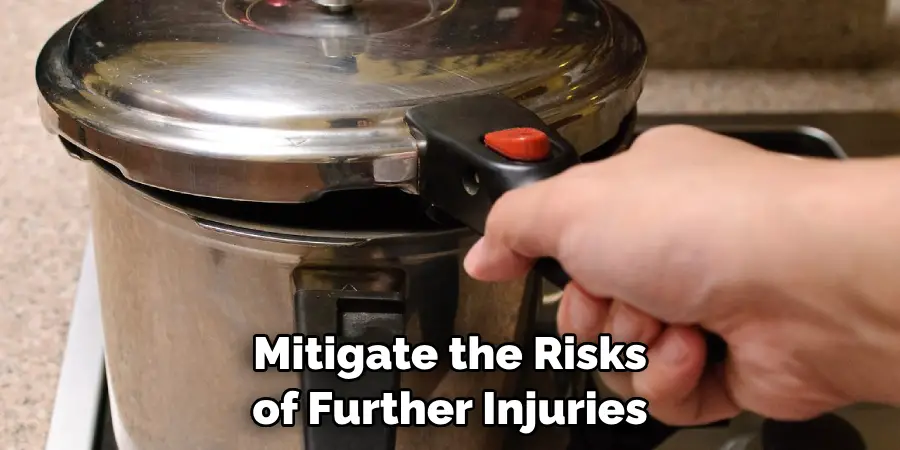
Conclusion
In conclusion, understanding how a pressure cooker can explode is essential for ensuring the safety of both individuals and their surroundings. By delving into the mechanics of pressure cookers and identifying the various causes behind these potentially dangerous incidents, we can take proactive measures to prevent them.
From proper maintenance and regular inspections to following manufacturer’s guidelines and avoiding common pitfalls like overfilling, each step contributes to a safer cooking experience.
Moreover, recognizing the risks associated with pressure cooker explosions underscores the importance of vigilance and responsible usage. Thanks for reading, and we hope this has given you some inspiration on how does a pressure cooker explode!

